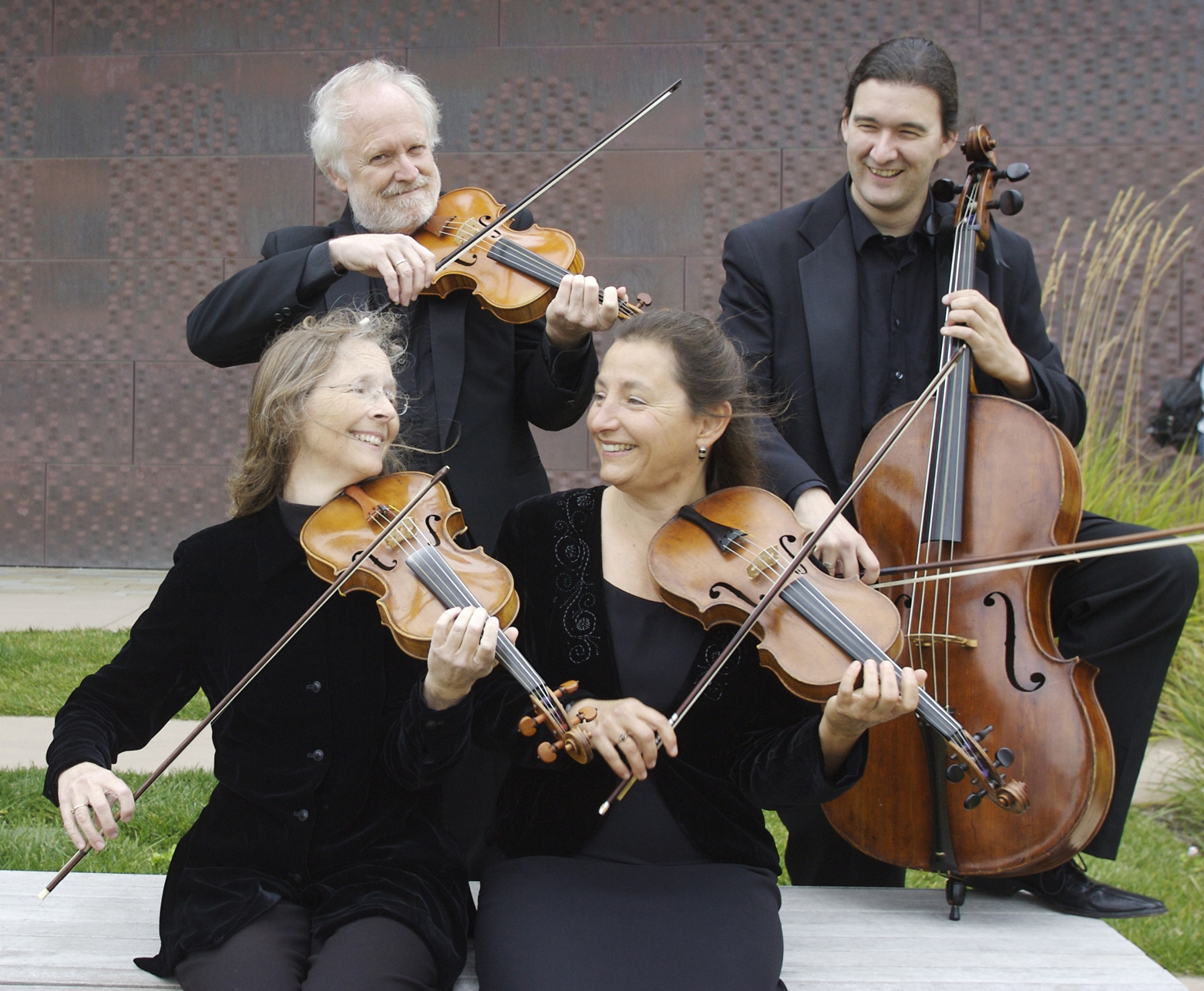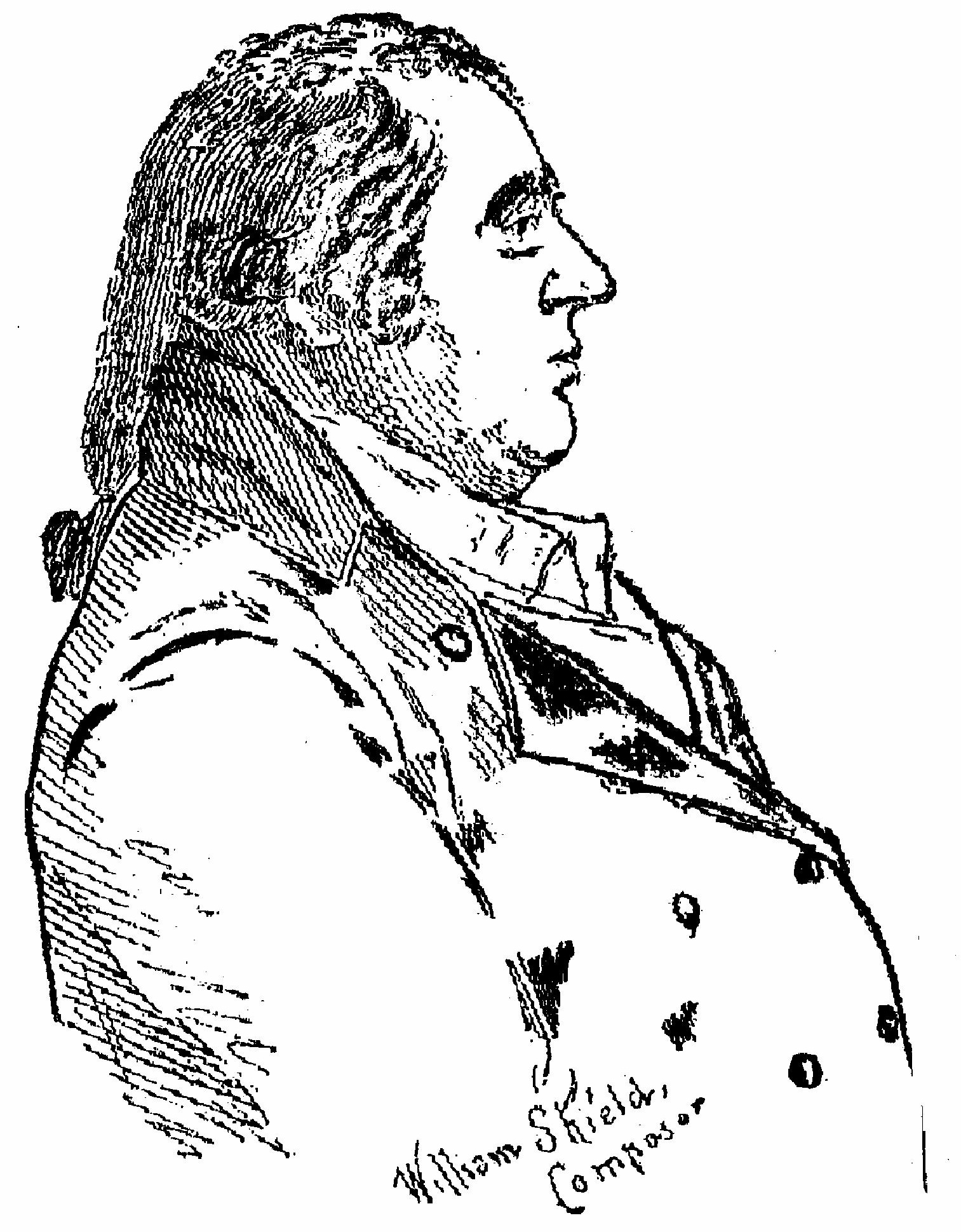The New Esterházy Quartet present the 9th episode in their popular “Haydn and His Students” series the weekend of January 6–8, with performances in Berkeley, San Francisco, and Palo Alto. Their program will feature Haydn’s Quartet in A, Op. 55, No. 1; Beethoven’s Quartet in E minor, Op. 59, No. 2; and William Shield’s Quartet No. 3 in C. Anthony Martin contributed these notes on the composers and their music.
* * *

Although he was apprenticed in his youth as a ship-builder in his native Newcastle-upon-Tyne, William Shield became one of London’s leading theatrical composers in the later 18th century. He was principal viola in the house band of the King’s Theatre, and house composer at Covent Garden for a dozen years. His nearly forty operas, operettas, shows, farces, and pantomimes were seen in London from The Flitch of Bacon (1778) through The Village Fete (1797). Rosina of 1782 was performed over 200 times by the end of the century. The Woodman was attended in December of 1791 by Haydn, who made some comments in his journal about the strengths and weaknesses of the singers, the impertinence of the gallery, and the sleepiness of the orchestra. Shield played in the small band that performed Haydn’s music in concerts put on by the Duke of York and the Prince of Wales in 1795 for the English royal family, with Haydn in attendance.
Shield and Haydn were not merely colleagues, they were friends. Shield referred to Haydn as “the Father of Modern Harmony” in his book An Introduction to Harmony, and his gift of a score to Handel’s Jeptha remained in Haydn’s possession the rest of his life. In the list of subscribers to Haydn’s Creation is found Shield’s name. After a Handel festival in London in June of 1791, they travelled together into the countryside outside of London, and Shield reported of this excursion that in four days in Haydn’s company he learned more than he had done by study in any four years of his life.
Haydn had another colleague in Johann Tost. This slippery character was a minor player in the drama of Haydn’s professional life. He was at one time the leader of Haydn’s second violins at Esterházy, later the husband of Prince Nicholas’s housekeeper, a wine merchant, a sales agent for Haydn’s Quartets, Opp. 54, 55, and 64, and the subject of several curious letters written by Haydn in the late 1780’s to his publishers—
A few days ago I was told that you [Artaria & Co. in Vienna] were supposed to have purchased from Herr Tost my very newest 6 Quartets…Since I would like to know, for various reasons, if this is true or not, I would ask you to let me know on the next post-day…
Now I would ask you [Sieber in Paris] to tell me candidly just how, and in what fashion, Herr Tost behaved in Paris. Did he have an Amour there? And did he also sell you the 6 Quartets, and for what sum? Please let me know all this as soon as possible…

The 6 Quartets were published, as two sets of three, Opp. 54 & 55, by Sieber in Paris in 1789, and shortly thereafter as Opp. 57 & 61 by Longman & Broderip and as Opp. 59 & 60 by Artaria in Vienna. The order of the quartets was different in each publisher’s sets, as well as details of dynamics and articulations. Few autograph sketches survive, so it is not surprising that the editions that currently offer Urtext or “authentic” readings also differ from each other in many respects.
Shield’s only set of quartets from 1782 as well as Beethoven’s first set, Op. 18 from 1800, both comprised the traditional six works, but Beethoven’s next set, Op. 59 from 1806, had the new standard of three. Also traditional was the inclusion of but one quartet in a minor key in a set, a practice not observed only in Haydn’s Op. 20. Whereas the breaking of Haydn’s set of six quartets into two (Opp. 71 & 74 as well as Opp. 54 & 55) was a publisher’s ploy to make more sales, by the time Beethoven was writing his second set the scale of his works had become so grand that three were quite enough to satisfy Viennese music lovers that they were getting their money’s worth.
Beethoven’s E minor quartet is one of his last to feature two notated repeats in the first movement, each with its own written out turnaround to the beginning of the section to be repeated. These repeats are often omitted in performance and recording, thus making the second movement (in which there is no option to omit music that Beethoven wrote) proportionally too long. Count Andrey Kirillovich Razumovsky, the Tsar’s ambassador to the Habsburg court in Vienna, commissioned the Op. 59 set and asked Beethoven to incorporate Russian themes. In the third movement we encounter a Ukrainian tune that was also used by Mussorgsky in the coronation scene of his opera Boris Godunov.
* * *
The New Esterházy Quartet is one among dozens of Affiliate groups SFEMS is proud to support. With Haydn’s 68 quartets as their core repertoire, the New Esterházy the Quartet is increasingly recognized as one of the world’s top period-instrument string quartets. Voted “Best Chamber Music Performers” by San Francisco Classical Voice in 2015, the Quartet has been praised for their “sumptuous sound with beautifully controlled dynamics” and recently received accolades in Early Music America Magazine for their Haydn in America CD. The members of the New Esterházy Quartet—violinists Kati Kyme and Lisa Weiss, violist Anthony Martin, and cellist William Skeen—often occupy the first chairs of Philharmonia Baroque Orchestra and other period music ensembles. They also are responsible for creating our unique Classical Music Summer Workshop.
Performances are Friday, January 6, 8:00 p.m. at the Hillside Club, 2286 Cedar Street (at Spruce), in Berkeley; Saturday, January 7, 4:00 p.m. at St. Mark’s Lutheran Church, 1111 O’Farrell Street, San Francisco; and Sunday, January 8, 4:00 p.m. at All Saints’ Episcopal Church, 555 Waverley Street (at Hamilton), Palo Alto. Please note the Friday performance is part of the Hillside Club Concert Series, and tickets for this performance ($25) are sold only at the door. Tickets for the other performances are $30, with discounts for SFEMS members, seniors, and students, may be reserved by phone (415-520-0611) or at the Quartet’s website, www.newesterhazy.org.












